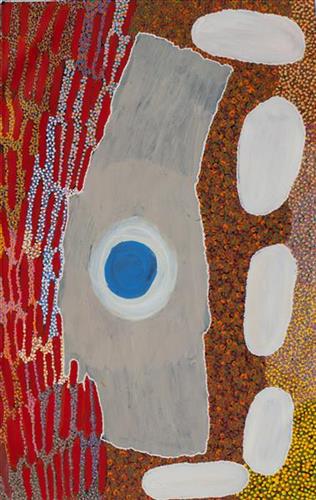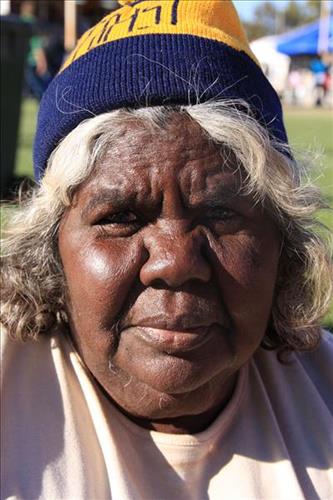111581967084
Luka
“Luka is my home, my mummy and grandmother and fathers Country, all the families Country. This place is near the same place I was born, there’s pussy cat, dingo and fox all around. That jila (snake) there inside, always water there”
– Thelma Ngarga’s Judson
Luka is a yinta (permanent waterhole) located kayili (north) of the Percival Lakes region in Western Australia’s Great Sandy Desert. Luka forms part of Ngarga’s ngurra (home Country, camp), and lies just west of the site where she was born.
Luka is home to an ancestral rainmaking jila (snake) of the same name. The Western Desert term jila is used interchangeably to describe springs considered to be ‘living’ waters and snakes, both of which play a central role in Martu culture and Jukurrpa (Dreaming). During the pujiman (traditional, desert dwelling) period, knowledge of water sources was critical for survival, and today Martu Country is still defined in terms of the location of water sources. Of the many permanent springs in Martu Country, very few are ‘living waters’; waters inhabited by jila. Before they became snakes, these beings were men who made rain, formed the land and introduced cultural practices like ceremonies and ritual songs. Some of the men travelled the desert together, visiting one another, but they all ended their journeys at their chosen spring alone, transformed into a snake. These important springs are named after their jila inhabitant, guarding their waters.
During the pujiman (traditional, desert dwelling) period, Martu would traverse very large distances annually in small family groups, moving seasonally from water source to water source, and hunting and gathering bush tucker as they went. At this time knowledge of water sources was critical for survival, and today Martu Country is still defined in terms of the location and type of water. Each of the hundreds of claypans, rockholes, waterholes, soaks and springs found in the Martu desert homelands is known by name, location, quality and seasonal availability through real life experience and the recounting of Jukurrpa (Dreaming) narratives.




